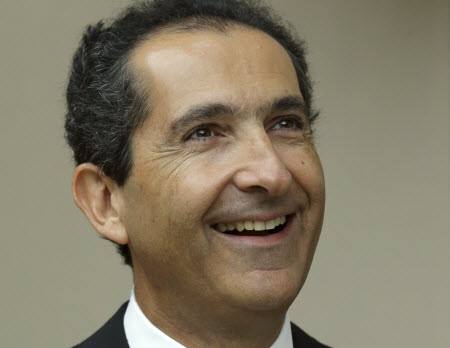2016: Emerging Answers to Big Questions

After a year dominated by news of a rise in pay TV subscriber losses, the emergence of “skinny bundles,” falling ratings for programmers and the continued consolidation of cable distribution, several top analysts said they believe 2016 will be a year when the media business begins to sort out its top priorities.
Telsey Advisory Group media analyst Tom Eagan believes ratings measurement — especially Nielsen’s release of its Total Audience Measurement product — could be a game-changer by offering accurate viewer data across content platforms. Falling ratings have hammered networks across the board as younger viewers move to mobile devices to watch content. With the ability to track those viewers, Total Audience Measurement could change that.
“Maybe we’ll see ratings be flat to up in 2016,” Eagan said. “We’ll know some of that when they roll this [Total Audience Measurement] out and when we see negotiations start in earnest for the upfronts in April. We may actually see a slowing down of the ratings declines, which have been occurring for the past three or four years.”
Being able to accurately measure viewing across all platforms and devices will be the final nail in the coffin for the old media business model, Eagan added.
“The old media model on the content side, which was roll out as many cable networks as you can because you’re going to get affiliate fees, is no longer the model,” he said. “You don’t want to have any weak links in your media stable.”
THE DISTRIBUTION DEALS
Pivotal Research Group CEO and senior media & communications analyst Jeff Wlodarczak said obtaining regulatory approval for the biggest merger deals of the year — Charter- Time Warner Cable and Altice’s purchases of Cablevision Systems and Suddenlink Communications — will be the top stories of 2016, but for a different reason than most suspect.
Multichannel Newsletter
The smarter way to stay on top of the multichannel video marketplace. Sign up below.
Wlodarczak said the industry will watch the Altice deals closely on the cost synergy fronts. Altice has said it believes it can squeeze $900 million in costs from Cablevision and another $215 million from Suddenlink, figures some analysts have said are too high. (The Federal Communications Commission gave the nod to Altice’s Suddenlink acquisition on Dec. 18.)
“If they do have the magic cost-cutting bullet, then others in the industry can implement the same strategies to boost EBITDA [earnings before interest, taxes, depreciation and amortization] margins,” Wlodarczak said.
As far as Charter, Wlodarczak said cable operators will be watching closely to see if bringing CEO Tom Rutledge’s business strategies to the combined entity will eventually drive low double-digit cash flow growth in 2017 and beyond.
The emergence of skinny bundles — smaller programming packages for cheaper prices — also made a big splash this year, with Verizon Communications’s FiOS TV Custom TV package, and are expected to continue to be news in 2016. FiOS Custom TV includes 45 channels — minus ESPN — for $54.95 per month initially, stepping up to $84.95 per month after a year. Subscribers also can choose from other programming packages, grouped by genres like Lifestyle, Entertainment, News & Info, Pop Culture, Kids and Sports, for an additional $10 per month.
Skinny bundles caused a bit of a stir at first — ESPN sued Verizon over dropping it from the Custom TV lineup — but haven’t really taken hold yet, mainly because existing programming contracts make it hard for distributors to break up the existing “fat” bundle. And several cable CEOs have said customers may come in inquiring about skinny packages, but the vast majority end up taking the full product suite.
Still, some over-the-top services like Dish Network’s Sling TV, which offers about 23 networks (including ESPN) for $20 per month in a single stream, have claimed success. Others, like Verizon’s go90 mobile-only service and Sony’s PlayStation Vue, are still searching for a market.
Eagan said skinny bundles could end up diluting demand for OTT.
CORD-CUTTING, SHAVING
Subscribing to skinny bundles “is the same as cord-shaving, but it’s voluntary cord-shaving,” Eagan said. “I think it will help offset the popularity of some of the OTT bundles.”
The emergence of more OTT players coincided with an acceleration in cord-cutting in Q2 and Q3, but cable operators were largely spared, due mainly to cable’s dominance in the broadband arena.
The rollout of DOCSIS 3.1, expected in the second half of the year and offering cable customers 1 Gigabit-per-second to 10-Gbps speeds, should help solidify that dominance, Wlodarczak added.
With cord-cutting not as big a concern for cable operators, MoffettNathanson principal and senior media analyst Craig Moffett said he believes the biggest overhang on the stocks will be the fear that Comcast or other operators will participate in the upcoming federal spectrum auctions as buyers.
“In the past, dalliances with wireless have been a significant negative for the stock, and we suspect some of the recent weakness in the shares owes to fears of reckless spending on either spectrum itself or on a network thereafter,” Moffett wrote, adding that it “is honestly not something we worry too much about.”
